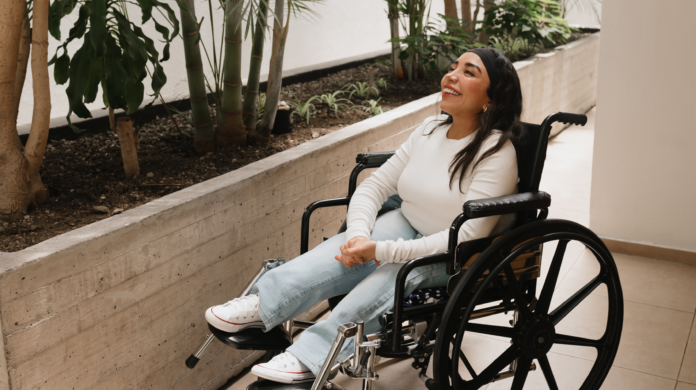Women with disabilities in Turkey confront very high rates of abuse as well as systemic barriers in nearly every aspect of life, including access to education and workplace discrimination, according to a new report by the Turkish Association of Women with Disabilities as part of the “Strong Civic Space for Gender Equality” project implemented by UN Women Türkiye.
The report noted that violence against women with disabilities is alarmingly widespread, with 35.8 percent of respondents reporting experiences of abuse. Psychological violence was the most common form, affecting nearly 90 percent of the participants. Additionally, 23 percent experienced socioeconomic violence and 13.5 percent reported sexual violence or other harmful practices.
The report, titled “The Status, Needs and Priorities of Women with Disabilities in Türkiye: A Rights-Based Approach,” outlines critical barriers to education, employment, health care and social participation, as well as systemic discrimination. The research was conducted between 2022 and 2024 and highlights the need for continued advocacy and collaboration among policymakers, civil society and international organizations to create a more equitable future.
The report emphasizes that women with disabilities face unique risks of abuse due to social isolation, dependence on caregivers and limited awareness of available support mechanisms. Many survivors indicated a lack of knowledge about where to report incidents of abuse, further compounding their vulnerability.
According to the report, nearly 44 percent of women with disabilities are unable to pursue their education to the desired level. Key obstacles include economic difficulties, family restrictions, societal stigma and inaccessible school environments.
Forty-seven percent of respondents cited insufficient financial resources as a primary reason for discontinuing their education. Additional challenges include inadequate transportation options and educational materials not tailored to their needs. The data also highlight that only 16.6 percent of women who did not complete their education to their desired level are currently employed in income-generating jobs, compared with 54.4 percent of those who achieved their chosen educational level.
Employment remains a critical area of concern, with only 37.7 percent of surveyed women participating in the labor force. Those who work often face discriminatory attitudes from employers and colleagues, inaccessible workplaces and a lack of accommodations for their disabilities. The report notes that women with higher education levels have a greater likelihood of employment; for instance, 76 percent of women with postgraduate degrees are employed, compared with just 5.8 percent of those with primary education.
The majority of unemployed respondents depend on family members for income, underscoring the economic vulnerabilities faced by this demographic. Furthermore, only 12 percent of respondents are actively seeking jobs, with many citing inaccessible recruitment processes and limited support as significant barriers.
The healthcare system presents another set of challenges for women with disabilities. Nearly one-third of respondents reported being unable to access medical services despite needing them. Women with speech and hearing disabilities were disproportionately affected, with 81.3 percent and 73.3 percent, respectively, reporting unmet needs. Key barriers include inaccessible facilities, insufficiently trained medical staff and discriminatory attitudes.
Although 77 percent of respondents have some form of social security income, economic hardship remains prevalent. Many women struggle to afford assistive devices and necessary medications, limiting their independence and quality of life.
Physical and social accessibility barriers restrict women with disabilities from fully participating in public life. The study found that 69 percent of respondents face difficulties accessing public buildings, and 60 percent report challenges using public transportation. Activities such as visiting parks, attending cultural events and even basic tasks like shopping are often inaccessible.
The findings reveal a strong correlation between disability severity and the level of exclusion experienced. Women with higher degrees of disability are significantly more likely to encounter barriers, limiting their ability to engage in education, work, and social activities.














